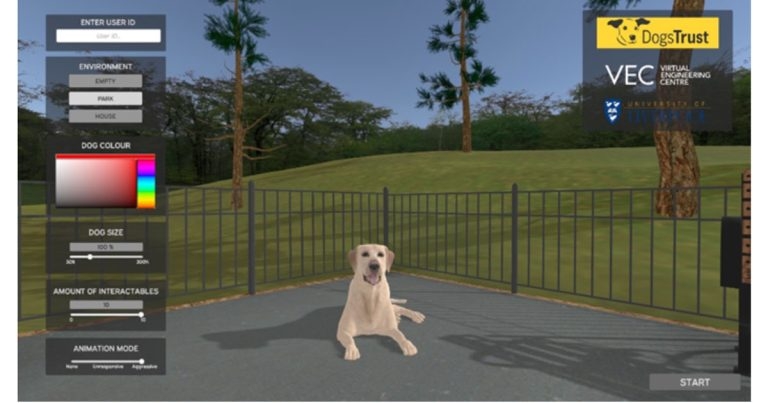29 Sept 2022
Innovative project led by researchers at the University of Liverpool has tested virtual dog known as DAVE (dog assisted virtual environment) to explore if and how humans interpret dog aggression signs.

The team hopes the virtual reality dog could be developed for use in other areas of behavioural research, such as educational dog safety lessons and in treatment of dog phobias.
A virtual reality Labrador created in a research project could one day be used to help prevent dog bites.
As part of a study, veterinary researchers at the University of Liverpool have tested a virtual reality dog, known as DAVE (dog assisted virtual environment), to explore if and how humans spot and interpret signs of dog aggression.
Previous research by the University of Liverpool in 2021 raised concerns about the growing number of dog bites in the UK, finding adult hospital rates for dog bites in England has tripled from 1998 to 2018.
If researchers understand behavioural interactions between humans and dogs better, they may be better placed to develop prevention strategies, as research using real dogs has challenges.
Carri Westgarth, a senior lecturer in human-animal interaction at the University of Liverpool, said: “Dog bites are a common public health issue affecting human-dog relationships.
“Studying human behaviour around a dog performing aggressive behaviours is ethically difficult, for the sake of the risk to the person, but also, we don’t want to be deliberately making dogs unhappy. A virtual dog solves these problems.”
Sixteen adults were recruited for a practical pilot study to explore a virtual indoor living room, with DAVE allocated in the opposite corner of the room.
Participants were asked if they recognised and understood the signs of aggressive behaviours displayed by the virtual dog, including licking its lips, yawning, front paw lifting, backing away, barking, growling and showing teeth.
Participant proximity to the dog was also assessed using head and hand tracking through virtual reality equipment in the study, published in Plos One. Most reacted as they would with a real dog, but three got close enough to the aggressive virtual dog to get bitten.
PhD student James Oxley, involved in the study – a collaboration with the university’s Virtual Engineering Centre, and funded and supported by Dogs Trust – said: This is a novel pilot study, which overcomes the challenges associated with assessing human behaviour around real dogs displaying aggressive behaviour.
“Our findings highlight the potential that the virtual reality model has to help us better understand human behaviour in the presence of dogs and our interpretation of dog behaviour.”
The team hopes the virtual reality dog could be developed for use in other areas of behavioural research, such as educational dog safety lessons and in treatment of dog phobias.